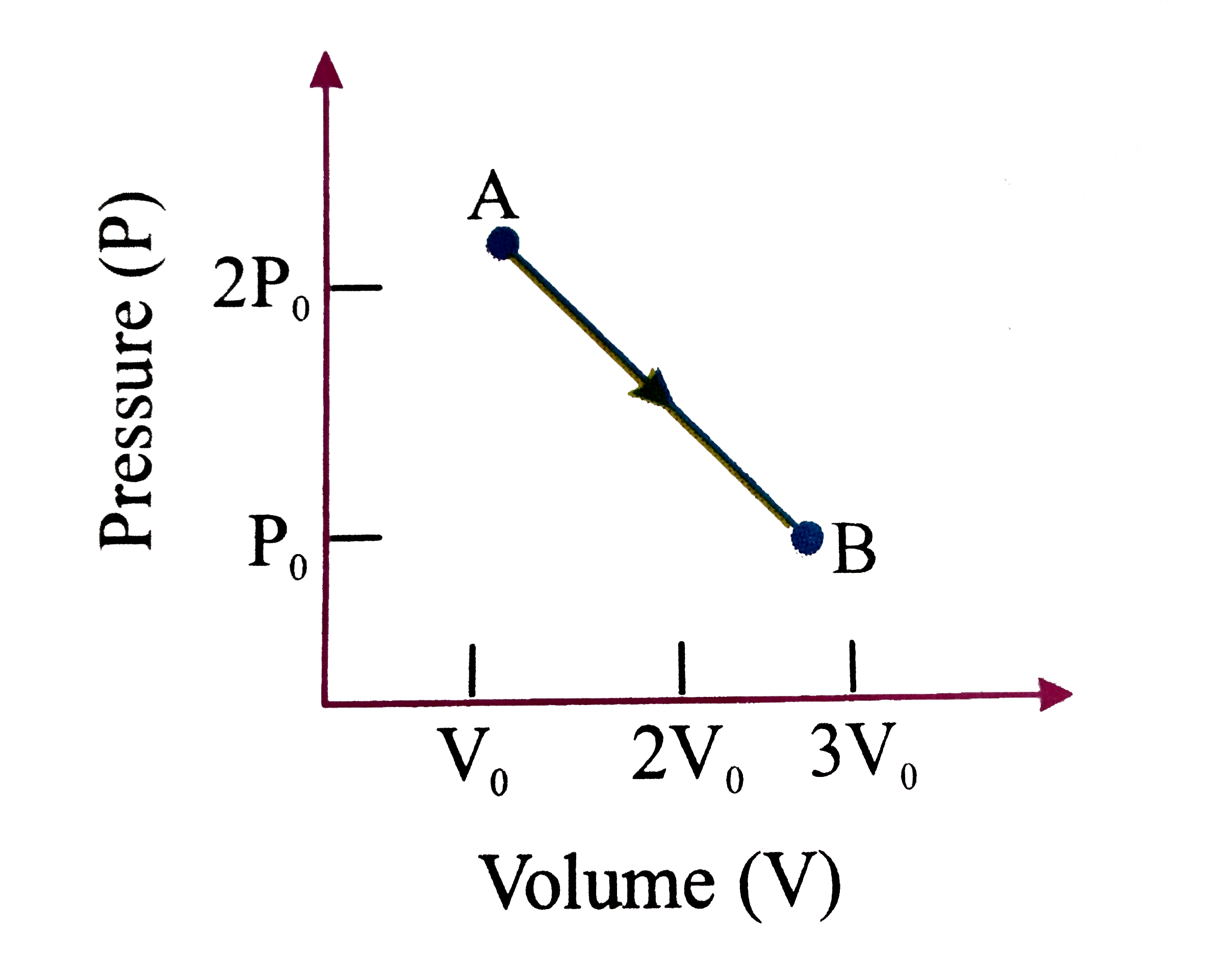Determine the average molar heat capacity of an ideal gas under going a process shown in fig.

A
(γ−1γ−1)R
B
(3γ−2γ−1)R
C
(γ−2γ−4)R
D
(γ+1γ−1)R
Video Solution
Text Solution
The correct Answer is:B
Let n be the number of moles of the gas,
then TA=2P0V0nRandTB=3P0V0nR
Now, work done by the gas during the proces is given by area under curve
ΔW=12(P0+2P0)(3V0−V0)=3P0V0
work done per mole of the gas per unit rise in temperature.
W1=ΔWnΔT=ΔWn(TB−TA) ,
=3P0V0n[3P0V0nR−2P0V0nR]=3R
Molar heat capacity of the gas for the above process will be
C=Cv+W'=Rγ−1+3R=(3γ−2γ−1)R
|
Topper's Solved these Questions
Similar Questions
Knowledge Check
The molar heat capacity for an ideal gas cannot
Abe negativeBbe equal to either CV or CPClie in the range CV≤C≤CPDit may have any value between −∞ and +∞Molar heat capacity of a gas is
AExtensive propertyBIntensive propertyCChemical property of gasDColligative propertyThe molar heat capacity of a gas in a process
Ais either CVorCPBlies between CVorCPCmay range from zero to infinityDcan have any real value
Find the molar heat capacity (in terms of R) of a monoatomic ideal gas undergoing the process: PV1/2=constant?
View SolutionThe molar heat capacity of an ideal gas (γ=1.40) varies during a process according to the law C=20.0+500T.
Is the process polytropic ?
View SolutionWhat is the molar specific heat capacity of a gas undergoing an adiabatic process ?
View SolutionWhat is the molar specific heat capacity of a gas undergoing an adiabatic process ?
View SolutionIf molar heat capacity of the given process (as shown in figure) is C, then

View Solution

